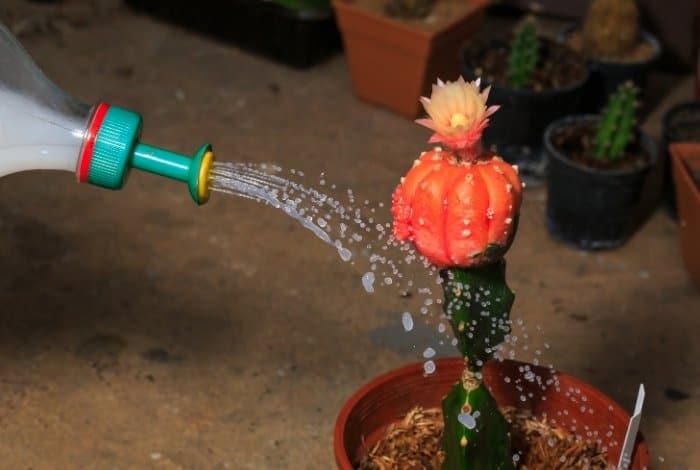Cacti are marvels of nature, perfectly adapted to thrive in arid environments. They have evolved to store water efficiently, enabling them to withstand long periods of drought. However, even these resilient plants require proper care and attention, particularly when it comes to watering. Understanding how often to water your cactus is crucial for promoting healthy growth and ensuring its longevity.
In this article, we will discuss the intricacies of cactus watering, including the factors that influence their water needs, ideal watering frequencies, and signs of overwatering and underwatering. With this knowledge, you can cultivate a thriving cactus collection that will flourish and elevate your indoor or outdoor space.
Factors Influencing Cactus Watering Needs
Before determining a watering schedule, it’s essential to recognize various factors that can affect when and how much to water your cactus. These factors include:
1. Species Diversity:
There are over 2,000 species of cacti, each with unique characteristics and water requirements. Some cacti are more drought-tolerant than others. For example, the popular Saguaro cactus needs different care compared to the petite Christmas cactus. Understanding the specific species you have will provide insights into its watering needs.
2. Environment and Conditions:
The environment where your cactus is situated plays a significant role in determining its hydration needs. Factors such as temperature, humidity levels, and exposure to sunlight can dramatically influence water retention in the plant’s soil. Cacti placed in direct sunlight will dry out quicker than those in shaded areas, necessitating a more frequent watering schedule. Similarly, higher humidity levels might slow down the evaporation process, requiring less frequent watering.
3. Soil Composition:
The type of soil in which your cactus resides is critical for promoting drainage and air circulation around the roots. Cactus soil, typically a blend of potting soil, sand, and perlite, allows excess moisture to escape. A plant in soil that retains water for extended periods could easily develop root rot, emphasizing the importance of proper drainage.
4. Pot Size and Material:
The container containing your cactus can also affect how often it needs water. Terra cotta pots are porous and will wick moisture away from the soil, allowing for a quicker drying time. Plastic pots, on the other hand, retain moisture longer. Additionally, if the pot is too small, the roots might become bound, impacting the plant’s ability to absorb water efficiently.
Establishing an Ideal Watering Schedule
Now that we understand the various factors at play, it is crucial to develop an appropriate watering routine for your cactus. Here’s a guideline to help you establish an effective watering schedule:
1. Assessing Soil Moisture:
Before watering, always check the soil moisture. A reliable method is to stick your finger about an inch into the soil. If it feels dry at that depth, it’s time to water. If it feels moist, wait a few more days before checking again. This simple technique helps prevent overwatering.
2. Seasonal Adjustments:
Cacti have distinct growth seasons. During the spring and summer, when most cacti actively grow, they will demand more water. A general guideline is to water every two to three weeks during these warmer months. In contrast, autumn and winter mark a dormant phase when water needs diminish significantly. It’s advisable to reduce watering to once every four to six weeks, ensuring the soil remains only slightly moist.
3. Watering Technique:
When watering your cactus, aim to soak the soil thoroughly until water drains from the bottom of the pot. Avoid watering directly onto the cactus to prevent rot or fungal issues. Allow the plant to dry out completely between watering sessions, as this mimics its natural environment.
Recognizing Overwatering and Underwatering Symptoms
Mistakes happen, and understanding the signs of overwatering or underwatering is key to rectifying those mistakes. Here’s what to look for:
1. Overwatering:
Excess water can lead to root rot, a condition detrimental to a cactus’s health. Signs include yellowing or wilting stems, mushy or discolored roots, and a sour smell emanating from the soil. Should you notice these symptoms, allow the plant’s soil to dry thoroughly and consider repotting into fresh, well-draining soil.
2. Underwatering:
Conversely, an underwatered cactus will exhibit signs of distress, like shriveled or wilting stems and a lack of vibrant color. If the cactus appears soft and wrinkled, it likely needs immediate watering. However, it’s crucial to water it gradually to avoid shock.
Conclusion: Nurturing Your Cactus for Thriving Growth
Watering your cactus appropriately is vital for its health and development. By understanding its specific needs, the environmental context, and the intricacies of proper watering techniques, you can cultivate a healthy cactus that will thrive for years to come. Regularly assess your cactus’s condition, adjust your watering schedule as needed, and soon you will master the art of cactus caretaking. Your diligent efforts will undoubtedly reward you with a flourishing plant that brings beauty and intrigue to your space.





Leave a Comment